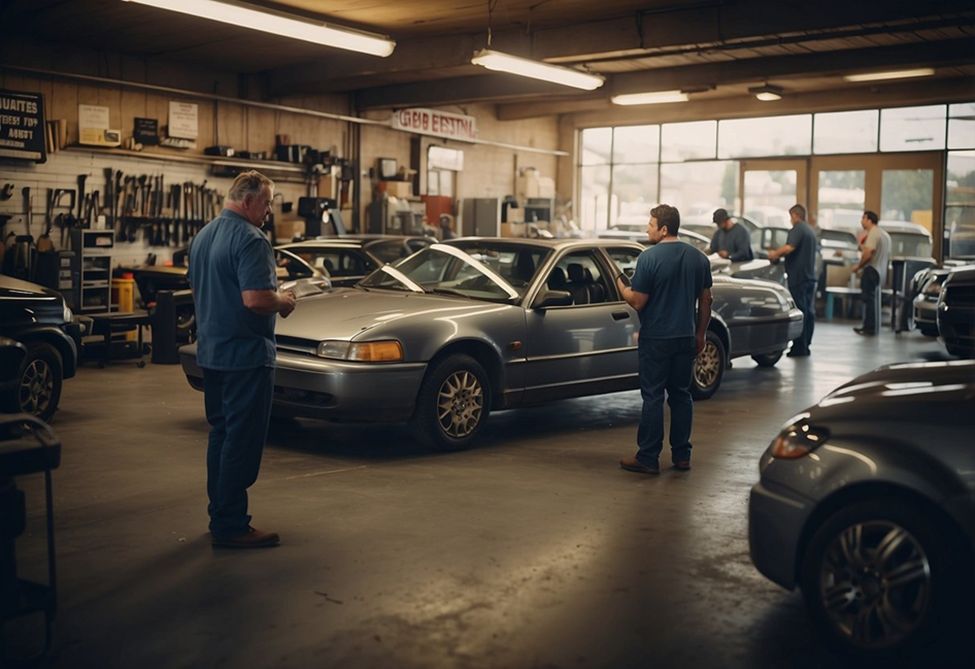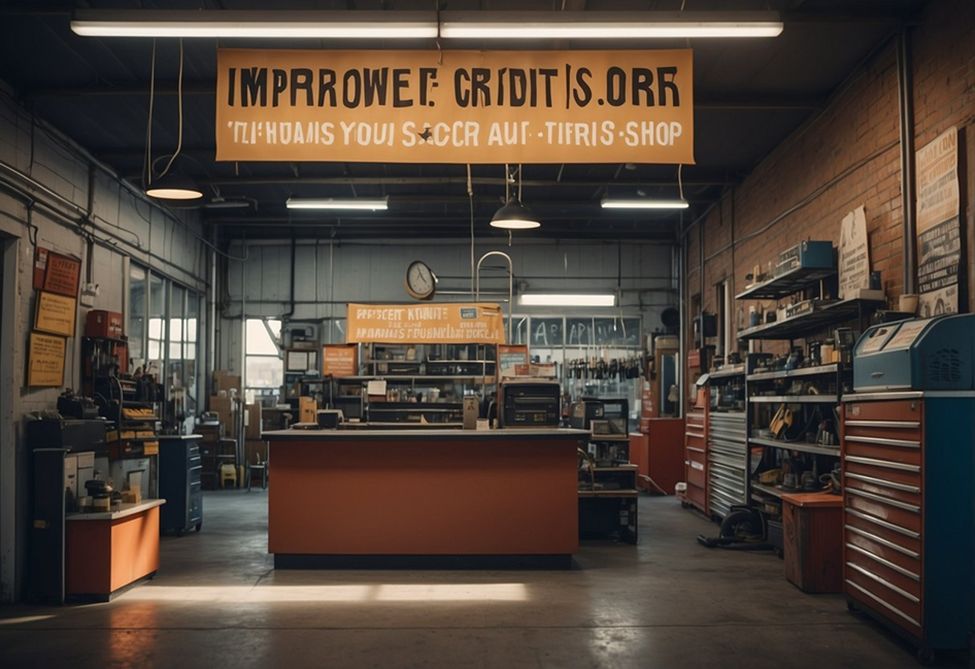

Auto repair shop owners often face challenges when seeking funding to start or grow their businesses.
Getting the right financial support can make a big difference in buying equipment, hiring staff, or expanding services. Many owners don’t know where to start or what options are available.
Small business loans for auto repair shops come in different forms, including SBA loans, equipment financing, and working capital loans. Each type of funding has its benefits and requirements.
Shop owners must understand these options to choose the best fit for their needs.
With the right approach, securing funding can help auto repair businesses thrive and serve their customers better.

A strong business plan is the foundation for securing your auto repair shop funding. It outlines your goals, strategies, and financial projections.
Start by describing your shop’s services and target market. Include details about your location, equipment, and expertise in automotive repair.
Next, analyze your competition and explain how your shop will stand out. This could be through specialized services, superior customer care, or innovative technology.
Present a clear marketing strategy to attract and retain customers. This may involve digital marketing, local partnerships, or loyalty programs.
Provide realistic financial projections for the first few years of operation. Include startup costs, expected revenue, and profit margins.
Detail how you plan to use the funding you’re seeking. Lenders want to know exactly where their money will go.
A well-crafted business plan can significantly improve your chances of securing loans or investments. It demonstrates your commitment and understanding of the auto repair industry.
Remember to keep your plan concise, professional, and focused on your shop’s unique strengths and opportunities.

A good credit score is key for getting small business funding. It shows lenders that you can be trusted to repay loans.
Pay all bills on time to boost your score, including credit cards, utilities, and existing loans.
Set up automatic payments to avoid missing due dates. Keep your credit card balances low. Try to use less than 30% of your available credit. This is called your credit utilization rate.
Check your credit report for errors and fix any mistakes you find. You can get free reports from the major credit bureaus once a year.
Avoid applying for new credit too often. Each application can lower your score. Only apply when you really need to.
If you have past issues, work on fixing them. Pay off old debts and resolve any accounts in collections. This takes time but will help your score.
If you’re just starting, consider getting a secured credit card. Use it responsibly to build a credit history.

A merchant cash advance can be a quick funding option for auto repair shops. This type of financing provides a lump sum of cash in exchange for a portion of future credit card sales.
Merchant cash advances are not traditional loans. They work by giving businesses upfront money based on expected future revenue. Repayment happens automatically through a percentage of daily credit card transactions.
Auto repair shops with steady credit card sales may find this option attractive. It can provide fast access to funds, often within a few days, and the application process is typically simpler than traditional bank loans.
One key benefit is flexible repayment. When business is slow, payments are lower. This can help manage cash flow during quiet periods.
However, merchant cash advances usually come with higher costs than traditional loans.
The factor rate determines the total repayment amount. It’s important to consider carefully whether the benefits outweigh the expenses.
Shop owners should review their financials and future projections before choosing this option. It’s wise to compare different funding sources to find the best fit for the business’s needs and goals.
SBA loans can be great for auto repair shop owners seeking funding. These loans are backed by the U.S. Small Business Administration, which makes them less risky for lenders.
The SBA 7(a) loan program is particularly useful for small businesses. It offers flexibility and can be used for various purposes, including buying equipment, expanding the shop, or managing working capital.
Auto repair shop owners should also consider SBA Express loans. These loans provide faster approval times, with up to $500,000 available for qualifying businesses.
Shop owners must meet certain criteria to apply for an SBA loan. These include a good credit score, a solid business plan, and the ability to repay the loan.
One key benefit of SBA loans is that they often have lower down payments than traditional bank loans. This can help auto repair shop owners preserve cash for other business needs.
Keep in mind that the application process for SBA loans can be lengthy. Shop owners should be prepared to provide detailed financial information and business projections when applying.
If you’re ready to get started, call us now!
Local economic development agencies often support small businesses like auto repair shops. These programs can offer various assistance to help your business grow and thrive.
Many cities and towns have special funding options for local enterprises. These might include grants and subsidies specific to your region or industry. Such programs aim to boost the local economy by supporting small businesses.
Auto repair shop owners should research what’s available in their area. Local chambers of commerce or small business development centers can be great resources for information. They often know about programs that aren’t widely advertised.
Some economic development programs offer low-interest loans or microloans. These can be easier to qualify for than traditional bank loans. Others might provide tax incentives or help with workforce training.
Networking with other local business owners can also lead to discovering these opportunities.
Attending community business events or joining local business associations can be helpful. These connections can provide valuable insights into available funding options.
Auto repair shops need specialized equipment to operate effectively. Buying new tools and machinery can be expensive, but equipment financing offers a solution.
Equipment loans let auto repair shops finance 80% to 100% of equipment costs. This often requires no down payment, making it easier to get started.
Some lenders offer flexible repayment terms for equipment financing. This can help match payments to your shop’s cash flow patterns.
Equipment financing may also have tax benefits. In some cases, the payments could be tax-deductible as operating costs.
New equipment can help your shop stay competitive. It may allow you to offer more services or complete repairs faster.
When applying for equipment financing, prepare financial statements and a business plan. Lenders will want to see how the new equipment will benefit your shop.
Compare offers from multiple lenders. Look at interest rates, repayment terms, and any fees involved. This helps you find the best deal for your auto repair shop’s needs.
Building strong relationships with potential lenders can significantly impact your ability to secure funding.
Start by researching banks and financial institutions with a history of supporting and contacting auto repair businesses.
Maintain regular communication by keeping lenders updated on your business’s progress, even when you’re not actively seeking funding.
Attend industry events and participate in local business networking opportunities to meet potential lenders and build rapport.
A positive relationship with lenders can lead to more favorable loan terms and a better understanding of your business needs when you apply for funding.
If you’re ready to get started, call us now!
Your business is more than just a job—it’s your passion and livelihood. But when cash flow hiccups threaten your growth and stability, it’s time to take control with Small Business Assets & Capital’s tailored financial solutions.
Whether it’s revenue-based financing, equipment leasing, or receivable factoring, our fast, flexible funding puts you back in the driver’s seat. Don’t let slow seasons or unpaid invoices stall your progress.
Our merchant cash advances and debt consolidation services ensure you have the working capital to seize every opportunity.
Secure your business’s future with Small Business Assets & Capital today—because the cost of doing nothing is too high. Apply Now.
What types of small business loans are available for auto repair shops?
Auto repair shops can explore various funding options, including SBA loans, equipment financing, working capital loans, and merchant cash advances. Each type of loan has its benefits, requirements, and terms, allowing shop owners to choose the best fit for their financial needs and business goals.
How can I improve my chances of getting approved for a small business loan?
To improve your chances of approval, ensure you have a solid business plan, a good credit score, and clear financial projections. Demonstrating a strong understanding of your business and the industry and having a clear plan for using the funds can make you more attractive to lenders.
How long does securing funding for an auto repair shop typically take?
The time it takes to secure funding can vary depending on the type of loan and lender. Traditional bank loans and SBA loans may take several weeks to a few months, while options like merchant cash advances and online loans can provide funds within a few days. Planning and choosing the right option is important based on your urgency.
What are the key considerations when choosing between different funding options?
Consider interest rates, repayment terms, fees, and eligibility requirements when evaluating funding options. You should also assess your current financial situation and future revenue projections to determine which option best suits your shop’s needs and goals.
Can I use multiple funding sources to support my auto repair shop?
Yes, many business owners use a combination of funding sources to meet their financial needs. For example, you might use equipment financing to purchase new tools and a working capital loan to manage day-to-day expenses. Diversifying your funding sources can provide greater financial flexibility and security.